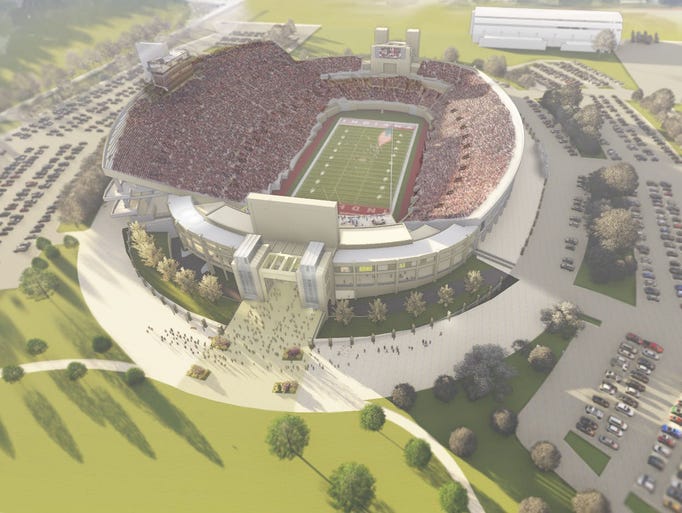Great question.
1963 and 1964, no permanent bleachers in either end zone:
This is from 1965 and the NEZ appears to have temp bleachers, because that’s not how the permanent set looked:
Going to the offseason before the 1968 season, there are still no permanent bleachers in either end zone:
But they do show up that year against Michigan:
This is 1970, and the regular bleachers are now in both end zones. Both sets have pavement underneath now:
great pics.
but things need put into context as well.
while the population of Indiana has maybe grown by a third since these pics, the population of Btown has more than doubled.
Btown, (not counting students), 31,000 in 1960, maybe 35,000 in 65, 42,000 in 1970, over 82,000 today..
i'm guessing the surrounding area has grown a lot as well, with northern Indiana where all the steel and auto manufacturing was, not so much.
remember also that there's a lot more creative accounting in attendance today as well.
MS can be at least a third empty today, and we'll still hear an attendance figure of maybe 42,000, so obviously inflated relative to actual butts in seats.
didn't used to be that way.
point being, that 52,000 plus for the bucket games in the mid 60s, would be equivalent to more like 90,000 today, adjusted for population.
on the other side, while never free, admission was relatively cheap
1971, good seats for IU-OSU were $6. so figure in the 60s, taking a family of 5, (2 adults, 3 kids), to the game might set you back $10-$13.
so while the population of the area was half what it is today, virtually everyone who really wanted to go, could.
a family of 5 today for a B10 game costs what, around $170 plus parking, (i see individual tics for B10 games are now $70), so they're not getting out of there for less than $200. (parking free back in the day iirc, at least the grass lots were where i always parked).
i wonder what percent of families in south central Indiana today can afford $200 per game to attend IU football games.




















